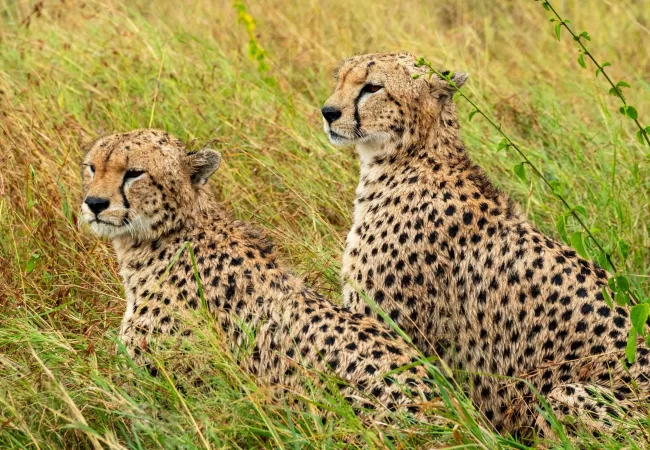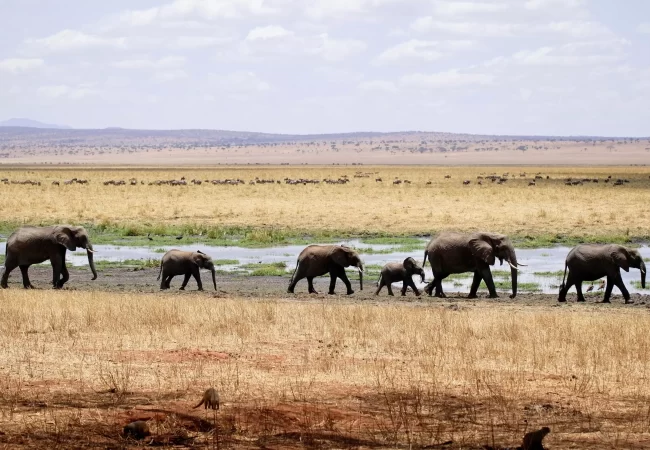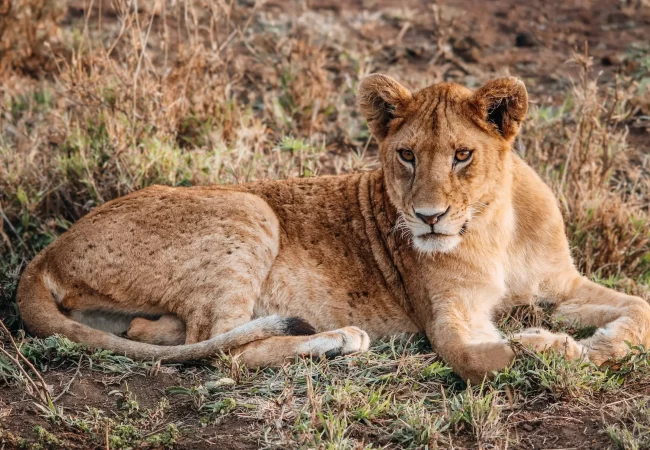Habitat
The Northern Serengeti is renowned for its diverse landscapes, featuring iconic savannahs with tall and short grass plains, acacia woodlands, riverine forests, rocky outcrops, and plateaus. Amidst the rolling hills flow vital rivers such as the mighty Mara River and the Sand River, which journey from the Maasai Mara to Lake Victoria. The expansive open plains of the southern Serengeti serve as the starting point of the life cycle for wildebeest and zebra, who thrive on the nutrient-rich grasslands of clay soil. This area transitions from Acacia woodlands to short-grass plains, drawing the Great Migration. Central Serengeti, the heart of this magnificent ecosystem, is a premier safari destination in Tanzania, teeming with wildlife. Its varied habitats, including swamps, rivers, kopjes, and thick woodlands, support a rich diversity of fauna.
Wildlife
The Serengeti is famed for offering some of the finest wildlife viewing opportunities in Africa. All major safari animals are abundant, with cheetahs and four of the Big 5 (lion, leopard, elephant, and buffalo) being easily spotted, though rhino sightings are rare and limited to black rhinos. In addition to the big cats, numerous other predators like spotted hyenas (especially active in the mornings), jackals, and bat-eared foxes can be seen. The park’s standout feature is the Great Migration, which takes place year-round in different regions of the park.
The Best Time to Visit
The optimal time to visit Serengeti National Park is during the Dry season, from late June to October. This period offers the best wildlife viewing overall, with the wildebeest migration being the most spectacular highlight. While wildlife viewing is excellent throughout the year, specific areas are particularly favorable at certain times. The timing of the migration varies annually, with the best chances of witnessing it in June and July, while wildebeest calving occurs from late January to February.




